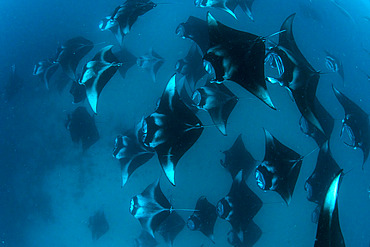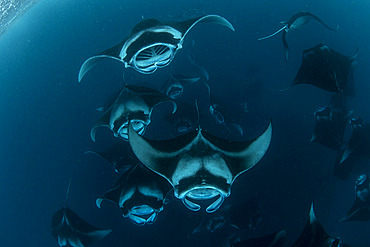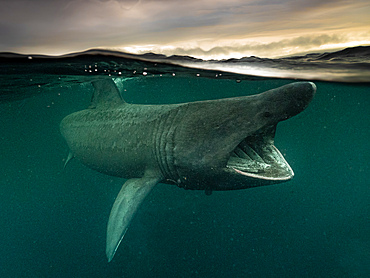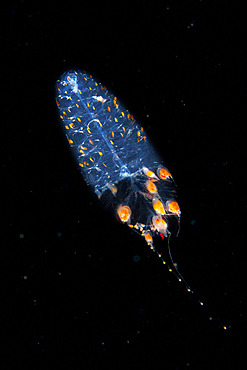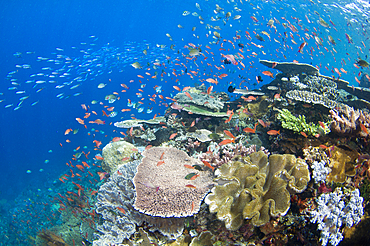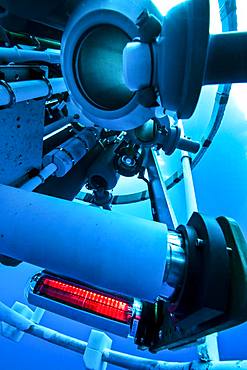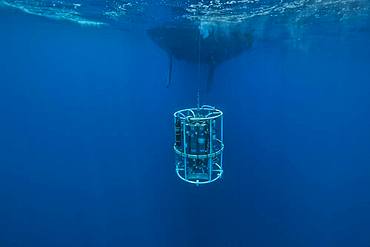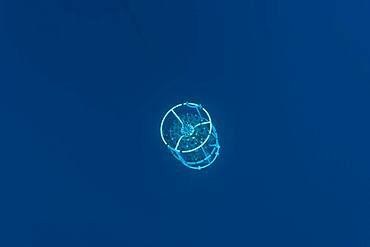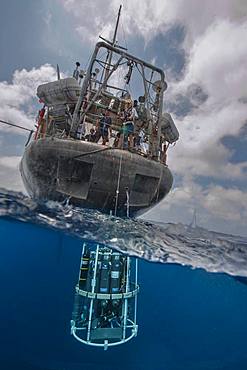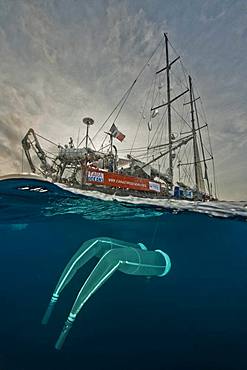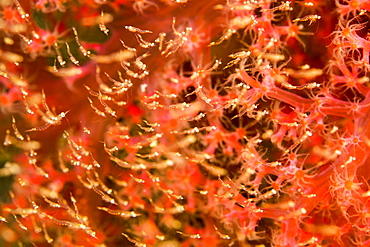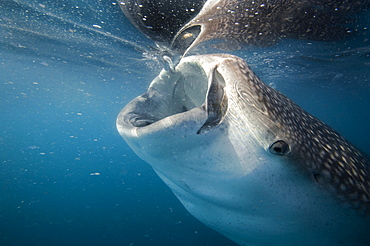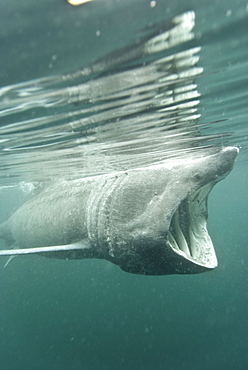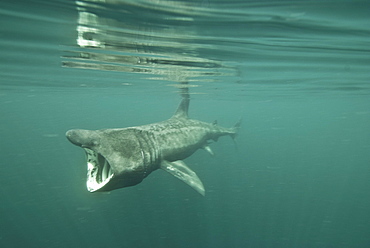Recent searches
Loading...
860-292371 - Reef manta rays (Manta alfredi formerly Manta birostris) chain-feeding on plankton. Hanifaru Lagoon, Baa Atoll, Maldives, Indian Ocean
860-292370 - Reef manta rays (Manta alfredi formerly Manta birostris) chain-feeding on plankton. Hanifaru Lagoon, Baa Atoll, Maldives, Indian Ocean
759-13512 - Munks Devil Ray feeding on plankton at night, Mobula munkiana, La Paz, Baja California Sur, Mexico
759-13510 - Munks Devil Ray feeding on plankton at night, Mobula munkiana, La Paz, Baja California Sur, Mexico
759-13511 - Munks Devil Ray feeding on plankton at night, Mobula munkiana, La Paz, Baja California Sur, Mexico
759-13508 - Munks Devil Ray feeding on plankton at night, Mobula munkiana, La Paz, Baja California Sur, Mexico
759-13509 - Munks Devil Ray feeding on plankton at night, Mobula munkiana, La Paz, Baja California Sur, Mexico
759-13507 - Munks Devil Ray feeding on plankton at night, Mobula munkiana, La Paz, Baja California Sur, Mexico
759-13506 - Munks Devil Ray feeding on plankton at night, Mobula munkiana, La Paz, Baja California Sur, Mexico
759-13505 - Munks Devil Ray feeding on plankton at night, Mobula munkiana, La Paz, Baja California Sur, Mexico
759-13504 - Munks Devil Ray feeding on plankton at night, Mobula munkiana, La Paz, Baja California Sur, Mexico
759-13503 - Munks Devil Ray feeding on plankton at night, Mobula munkiana, La Paz, Baja California Sur, Mexico
759-12238 - Coral Barnacle filtrate Plankton, Ceratoconcha sp., Komodo National Park, Indonesia
759-10156 - Whale Shark, Rhincodon typus, Richelieu Rock, Andman Sea, Thailand
759-10155 - Whale Shark, Rhincodon typus, Richelieu Rock, Andman Sea, Thailand
1350-6535 - Split shot of a Basking Shark (Cetorinus Maximus) in Gunna Sound, Isle of Colll, Scotland. It's mouth is gaping as it feeds. Clouds are lit with the setting sun in the background.
832-393408 - Whale shark (Rhincodon typus) swallows plankton, has a ship's keeper (Echeneis naucrates) in its mouth, Philippine Sea, Philippines, Asia
860-290381 - Zooplankton. Pelagic micro organism that is part of plankton (unidentified species). It lives dragged by the marine currents and it is common to observe it in spring. Marine invertebrates of the Canary Islands.
860-290382 - Zooplankton. Pelagic micro organism that is part of plankton (unidentified species). It lives dragged by the marine currents and it is common to observe it in spring. Marine invertebrates of the Canary Islands.
1350-3569 - Several species of small schooling fish such as damselfish, fusiliers, and anthias feed on plankton in the water column above hard corals, Porites sp., and Acropora sp., Komodo National Park, Nusa Tenggara, Indonesia, Pacific Ocean
1350-2437 - Manta ray, Manta birostris, feeding at night, Kailua-Kona, Big Island, Hawaii
1350-3568 - Several species of small schooling fish such as damselfish and anthias feed on plankton in the water column above hard corals, Porites sp., and Acropora sp., Komodo National Park, Nusa Tenggara, Indonesia, Pacific Ocean
1350-2430 - Manta ray, Manta birostris, feeding at night, Kailua-Kona, Big Island, Hawaii
1349-726 - Phytoplankton bloom off Ireland, satellite image
1116-46832 - Gymnosome pteropod (Hydromyles globulosa), a shell-less, planktonic mollusk sometimes called the sea butterfly, Bali, Indonesia
1116-46539 - Jellyfish (Pelagia Noctiluca) With Fish Prey Photographed During A Blackwater Scuba Dive Several Miles Offshore Of A Hawaiian Island At Night, Hawaii, United States Of America
860-287453 - Tara Oceans Expeditions - May 2011. CTD-Rosette (Conductivity Temperature Density instrumental platform with 7 additional sensors), Galapagos
860-287454 - Tara Oceans Expeditions - May 2011. CTD-Rosette (Conductivity Temperature Density instrumental platform with 7 additional sensors), galapagos
860-287451 - Tara Oceans Expeditions - May 2011. Surface plancton nets, deployed from Tara, Galapagos
860-287455 - Tara Oceans Expeditions - May 2011. CTD-Rosette (Conductivity Temperature Density instrumental platform with 7 additional sensors), Galapagos
860-287452 - Tara Oceans Expeditions - May 2011. CTD-Rosette (Conductivity Temperature Density instrumental platform with 7 additional sensors)
860-287456 - Tara Oceans Expeditions - May 2011. CTD-Rosette (Conductivity Temperature Density instrumental platform with 7 additional sensors), Galapagos
860-287449 - Tara Oceans Expeditions - May 2011. Surface plancton nets, deployed from Tara, Galapagos
860-287450 - Tara Oceans Expeditions - May 2011. Tara with deployed plancton nets. On "station", the boat is drifting without engine or sails. Tara Oceans, a unique expedition: Tara Oceans is the very first attempt to make a global study of marine plankton, a form of sea life that includes organisms as small as viruses and bacterias, and as big as medusas. Our goal is to better understand planktonic ecosystems by exploring the countless species, learning about interactions among them and with their environment. Marine plankton is the only ecosystem that is almost continuous over the surface of the Earth. Studying plankton is like taking the pulse of our planet. Recently, scientists have discovered the great importance of plankton for the climate: populations of plankton are affected very rapidly by variations in climate. But in turn they can influence the climate by modifying the absorption of carbon. In a context of rapid physico-chemical changes, for example the acidification observed today in the world's oceans, it is urgent to understand and predict the evolution of these particular ecosystems. Finally, plankton is an astonishing way of going back in time ? a prime source of fossils. Over the eons, plankton has created several hundred meters of sediment on the ocean floors. This allows us to go back in time, to the first oceans on Earth, and better understand the history of our biosphere. More than 12 fields of research are involved in the project, which will bring together an international team of oceanographers, ecologists, biologists, geneticists, and physicists from prestigious laboratories headed by Eric Karsenti of the European Molecular Biology Laboratory. Galapagos
860-286685 - Pyrosomes, colony hundreds to thousands individuals called zooids, cloned from one egg and bound together, Mirissa, Sri Lanka, Indian Ocean
1116-39732 - This species of coral hermit crab (Paguritta sp) is well known, but still awaiting a name from biologists. It lives in a hole in hard coral and traps passing plankton in it's feathery antennae, Yap, Micronesia
1116-39945 - Anemone shrimp, Ancylomenes sarasvati, previously known as Periclemenes sarasvati, Dumaguete, Philippines
1116-40060 - Milletseed Butterflyfish (Chaetodon citrinellus) feeding on plankton off Ni'ihau Island near Kauai, Hawaii, USA during the spring. This fish species is endemic to the Hawaiian Islands, Kauai, Hawaii, United States of America
1116-39728 - Detail of the center branching arms of a Crinoid or Feather Star (Lamprometra klunzingeri) open and feeding on plankton at night, Philippines
1116-39949 - Mysid shrimp of the order Mysidacea, mass together in front of alcyonarian soft coral, Dumaguete, Philippines
1116-39937 - Reef Manta Rays (Manta alfredi), feed over baskets of lights used to attract plankton off the Kona Coast, Kona, Island of Hawaii, Hawaii, United States of America
832-378965 - Group of Red Sea garden eels (Gorgasia sillneri), feeding on plankton floating by them leaning out of the sandy bottom, Eel Garden, Red sea, Dahab, Sinai Peninsula, Egypt, Africa
465-3384 - Golden damselfish (Amblyglyphidodon aureus) a zoo plankton feeding coral reef fish seen here ingesting food, Matangi Island, Vanua Levu, Fiji, Pacific
860-285205 - Whale Shark sifting plankton at surface-Gulf of California
860-285201 - Mouth of a Whale Shark sifting plankton, Gulf of California
860-285204 - Whale Shark sifting plankton with Remora -Gulf of California
860-285203 - Mouth of a Whale Shark sifting plankton, Gulf of California
465-3245 - Manta ray (Manta birostris) feeding on zooplankton by extending its cephalic lobes, Quintana Roo, Mexico, North America
465-3243 - Manta ray (Manta birostris) feeding on zooplankton by extending its cephalic lobes, Yum Balam Marine Protected Area, Quintana Roo, Mexico, North America
465-3249 - Whale shark (Rhincodon typus) feeding at the surface on zooplankton, mouth open, known as ram feeding, Yum Balam Marine Protected Area, Quintana Roo, Mexico, North America
465-3244 - Scientist and whale shark (Rhincodon typus) feeding at the surface on zooplankton, mouth open, known as ram feeding, Yum Balam Marine Protected Area, Quintana Roo, Mexico, North America
465-3252 - Manta ray (Manta birostris) feeding on zooplankton by extending its cephalic lobes, Quintana Roo, Mexico, North America
465-3248 - Manta ray (Manta birostris) feeding on zooplankton by extending its cephalic lobes, Yum Balam Marine Protected Area, Quintana Roo, Mexico, North America
465-3251 - Biologist taking skin sample from a whale shark to determine what plankton types the animal has been feeding on, Yum Balam Marine Protected Area, Quintana Roo, Mexico, North America
869-3689 - test diatom diatom differential interference contrast microscopy DIC
869-3707 - globular alga volvox dark field microscopy
869-3674 - globular alga volvox dark field microscopy
869-3673 - globular alga volvox bright field microscopy
869-3692 - diatoms diatoms phase contrast microscopy
869-3708 - globular alga volvox differential interference contrast microscopy DIC
869-3710 - globular alga volvox differential interference contrast microscopy DIC
869-3711 - globular alga volvox differential interference contrast microscopy DIC
869-3687 - test diatom diatom differential interference contrast microscopy DIC
869-3709 - globular alga volvox differential interference contrast microscopy DIC
869-3682 - globular alga volvox bright field microscopy
869-3680 - diatoms living diatom differential interference contrast microscopy DIC
869-3685 - globular alga volvox dark field microscopy
869-3684 - globular alga volvox dark field microscopy
869-3675 - globular alga volvox dark field microscopy
869-3681 - globular alga volvox bright field microscopy
978-463 - Basking shark (Cetorhinus maximus) feeding on plankton, Hebrides, Scotland, United Kingdom, Europe
978-465 - Basking shark (Cetorhinus maximus) feeding on plankton, Hebrides, Scotland, United Kingdom, Europe
978-464 - Basking shark (Cetorhinus maximus) feeding on plankton, Hebrides, Scotland, United Kingdom, Europe
978-462 - Basking shark (Cetorhinus maximus) feeding on plankton, Inner Hebrides, Scotland, United Kingdom, Europe
978-466 - Basking shark (Cetorhinus maximus) feeding on plankton, Hebrides, Scotland, United Kingdom, Europe
1022-79 - Silver drummer (kyphosus sydneyanus) silvery grey colour, feeding on brown seaweed, wild, day, schools, marine protected area, diving off Rottnest Island, Western Australia, Indian Ocean. MORE INFO: other name common buffalo bream, dark tail and a distinctive dark line that looks a little like a moustache below the eye, occur in large schools. Distribution more widespread throughout Australia.
908-25 - Basking Shark (Cetorhinus maximus) Close up of tail. Cornwall, UK
Restricted resolution (Please contact us). (RR)
908-27 - Basking Shark (Cetorhinus maximus) Close up of head. Cornwall, UK. (A4 only).
1022-81 - tallfin batfish (platax teira), juvenile, wild, day, marine protected area, diving off Coral Bay, Ningaloo reef, Western Australia, Indian Ocean. MORE INFO: with 3 dark bars, very long dorsal, anal and pelvic fins, feed on plankton from water column.
1022-80 - Jourdan's turban (turbo jourdani) large gastropod shell, reddish-brown, Rottnest Island reef, wild, day, marine protected area, free-diving off, cool temperate waters of Western Australia. MORE INFO: Marine plant common kelp, a dominant feature of the underwater landscape. Protected areas are covered in lush growth of diverse algae, also red algea are here.
978-125 - Yellow Sweeper (Parapriacanthus ransonneti) Live by day in dense groups and moving into open water to feed on plankton at night.Red Sea.
978-123 - Yellow Sweeper (Parapriacanthus ransonneti). Live by day in dense groups and moving into open water to feed on plankton at night.Red Sea.
1036-291 - Wave patterns showing natural patterns (of dead plankton). Walker Bay, Western Cape, South Africa.
1036-290 - Tidal currents showing in natural patterns (of dead plankton). Walker Bay, Western Cape, South Africa.
1012-137 - Leather Coral Polyps (Sarcophyton sp) each extending its 8 arms to try catching plankton in water. Coral Polyps are individual animals having a common base (in this case, the leathery base). Derawan, Kalimantan, Indonesia.
931-492 - Melon headed whales (Electra dolphin) . A melon headed whale diving into a seafull of white plankton. Eastern Caribbean
979-1358 - Krill captured in a bottle! Taken from the site where a Fin Whale (Balaenoptera physalus) was surface feeding in the upper Gulf of California (Sea of Cortez), Mexico.
817-365154 - Whale Shark, Rhincodon typus, Cenderawasih Bay, West Papua, Indonesia
817-365149 - Whale Shark and Freediver, Rhincodon typus, Cenderawasih Bay, West Papua, Indonesia
